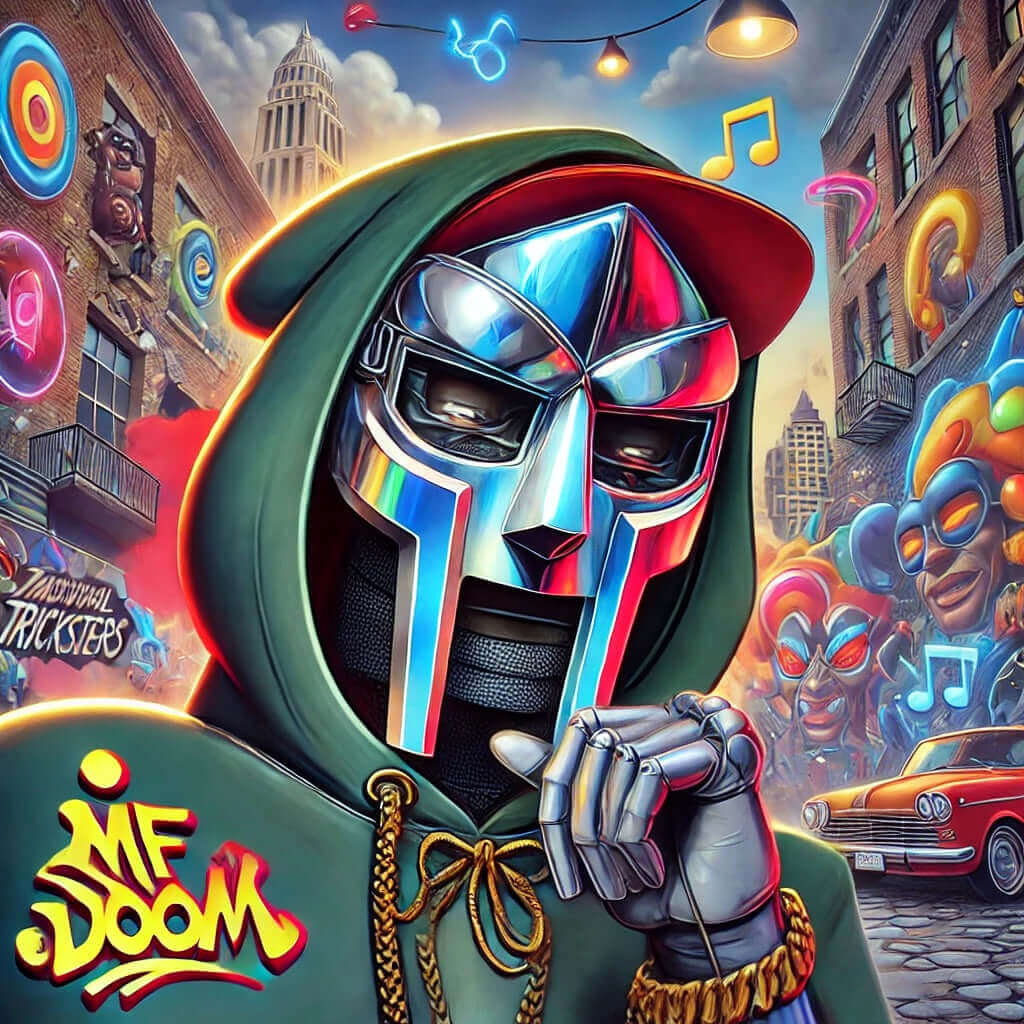
MF DOOM: Unmasking the Modern Trickster in Hip-Hop
Share
In the vast and diverse landscape of hip-hop, the figure of MF DOOM stands out as a testament to the power of mystique and complexity. Behind his signature metal mask, DOOM crafted a persona that drew heavily on the narrative depth and cunning historically attributed to mythological tricksters. Just as these ancient figures captivated the imaginations of their audiences, DOOM's intricate lyrics and elusive public persona have left an indelible mark on music and culture. Our MF TRICKSTERS collection celebrates this unique intersection of myth and modernity, inviting fans to explore the mythological dimensions that DOOM embodies.
MF DOOM's Persona and Artistry:
Daniel Dumile, known professionally as MF DOOM, reinvented himself in the late 1990s after enduring personal and professional setbacks. His adoption of the DOOM persona, complete with a mask inspired by Marvel’s Doctor Doom, was both a protective shield and a strategic mystery, creating a layer of separation between the artist and the industry. DOOM’s lyrics are a labyrinth of references, puns, and narratives that challenge listeners to untangle their meanings—a task as rewarding as it is complex.
His performance style further complemented his lyrical complexity. DOOM was known for his unpredictability and for blurring the lines between performance and reality, famously sending imposters to perform in his stead. This mischievous approach not only frustrated some expectations but also played into the trickster theme, where identity and truth are fluid and elusive.
Exploring the Trickster Archetype:
Tricksters are a common figure in mythology, known for their intelligence, willingness to break societal norms, and their role as agents of change. They often use humor and cunning to subvert power structures, challenging gods and mortals alike. These characteristics make tricksters beloved and critical figures in folklore, embodying the complexity of human nature itself.
Detailed Parallels Between MF DOOM and Mythological Tricksters:
Wit and Humor:
Sun Wukong, also known as the Monkey King, is celebrated for his playful defiance of authority and clever problem-solving, much like DOOM’s lyrical ingenuity that often hides complex truths behind a veneer of humor.
Anansi, the spider god, is another trickster known for spinning stories that captivate and educate, paralleling DOOM’s intricate storytelling that requires active engagement from his audience.
Rule-Breaking:
Loki, the Norse god, who is perhaps the most famous trickster, embodies the spirit of chaos and rule-breaking. DOOM similarly shattered expectations with his unconventional approach to music production and public persona.
Mischievousness:
Coyote stories often focus on the character’s role as a disruptor who uses tricks to teach lessons. DOOM’s playful deceit in live performances and his elusive public appearances reflect this trickster quality.
Irreverence:
Eshu, known for walking the line between respect and disrespect, uses his cleverness to outsmart his peers and question authority. DOOM’s lyrics frequently contain critiques of the music industry and broader societal issues, showcasing a similar irreverence.
Unpredictability:
Raijin and Fujin, the gods of thunder and wind, symbolize the uncontrollable and unpredictable forces of nature. DOOM captured a similar essence with his sudden album releases and unexpected collaborations, keeping fans perpetually on their toes.
Dual Nature:
Maui and Curupira both represent figures of protection and mischief, embodying the dual aspects of creation and destruction. DOOM, too, portrayed himself as both a villain and a hero, exploring the dualities within his character and in the world around him.
Conclusion:
MF DOOM’s artistic legacy is rich with the echoes of trickster mythology, making him an ideal figure for our MF TRICKSTERS collection. Through this series, we delve deeper into the narrative and cultural significance of each trickster god and their modern counterpart, MF DOOM. By wearing these designs, fans not only celebrate DOOM’s musical genius but also connect with a lineage of storytelling that spans centuries and civilizations.